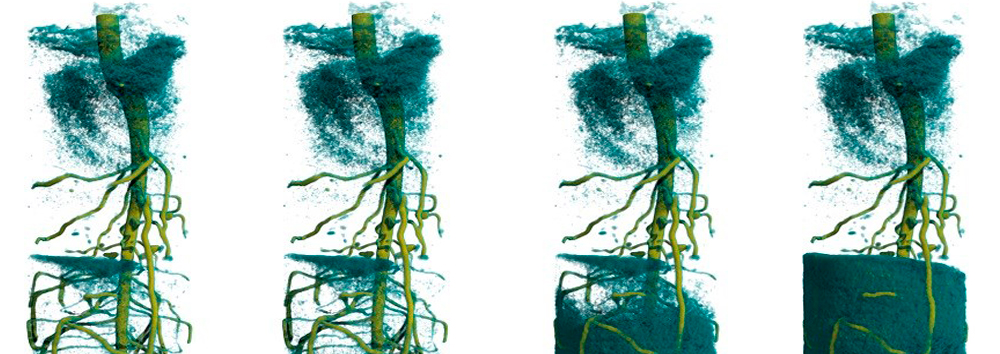For the first time, researchers have captured neutron tomography images in about a second, nearly an order of magnitude faster than previously reported attempts. Until recently, long image acquisition times have been the major obstacle to using this non-invasive technique to study dynamic 3D processes such as the water exchange between roots and soil.
“The ability to acquire images so quickly allows us to capture, with unprecedented detail, the fast processes involved when roots absorb water and other nutrients from soil,” said Christian Tötzke, who led the University of Potsdam research team. “A better understanding of these root-soil interactions could help optimize water use efficiency and crop production, which could help meet higher demands from an increasing world population and limited resources”
“Because neutrons are highly sensitive to hydrogen — including hydrogen-containing compounds like water — high-speed neutron imaging can be used to visualize plant roots while simultaneously mapping the changing water distribution in soil,” said Tötzke. “It could also be used to study other dynamic transport processes such as the transfer of fluids in engineered or natural porous material systems.”
Neutron imaging is ideal for this application because when neutrons interact with atoms like hydrogen and lithium, they become highly visible while metals such as aluminum and titanium are mostly transparent. This imaging approach also distinguishes hydrogen isotopes, allowing an isotopically heavier water molecule known as deuterated water to be used as a contrast agent. This type of water is also well tolerated by plants.
However, the relatively slow acquisition speed of neutron imaging has made it challenging to use for time-resolved 3D studies of fast processes like water absorption. A neutron source available at the recently opened imaging facility NeXT-Grenoble at the Institute Laue-Langevin can provide the power needed for faster neutron imaging.
About ILL
The Institut Laue-Langevin (ILL) is an international research organisation that is a world leader in Neutron Science. Since its foundation in 1967, the Institute is a shining example of scientific cooperation. Presently 10 European countries (Spain, Switzerland, Austria, Italy, Czech Republic, Sweden, Belgium, Poland and Slovakia) ensure the necessary financial support for the ILL operation under the governance of 3 Associate Member countries: France, Germany and The United Kingdom. The research conducted at the ILL is dedicated to fundamental research (60%) as well as societal challenges research (40%). It covers a wide range of disciplines such as biology, (green) chemistry, materials science, condensed matter physics, as well as nuclear and particle physics.



